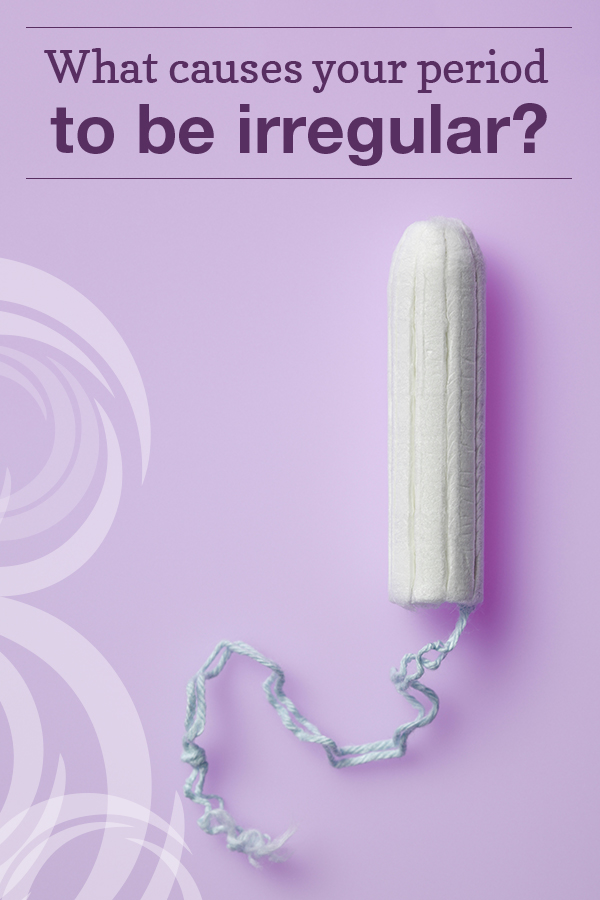Menstrual irregularities can have a variety of causes, including pregnancy, hormonal imbalances, infections, diseases, trauma, and certain medications.1,2,3,4,5,6
Causes of irregular periods (generally light) include:2
 Perimenopause (generally in the late 40s and early 50s)
Perimenopause (generally in the late 40s and early 50s)- Primary ovarian insufficiency (POI)
- Eating disorders (anorexia nervosa or bulimia)
- Excessive exercise
- Thyroid dysfunction (too much or too little thyroid hormone)
- Elevated levels of the hormone prolactin, which is made by the pituitary gland to help the body produce milk
- Uncontrolled diabetes
- Cushing's syndrome (elevated levels of the hormone cortisol, used in the body's response to stress)
- Late-onset congenital adrenal hyperplasia (problem with the adrenal gland)
- Hormonal birth control (birth control pills, injections, or implants)
- Hormone-containing intrauterine devices (IUDs)
- Scarring within the uterine cavity (Asherman's syndrome)
- Medications, such as those to treat epilepsy or mental health problems
Common causes of heavy or prolonged menstrual bleeding include:2,7
- Adolescence (during which cycles may not be associated with ovulation)
- Polycystic ovary syndrome (PCOS) (bleeding irregular but heavy)
- Uterine fibroids (benign growths of uterine muscle)
- Endometrial polyps (benign overgrowth of the lining of the uterus)
- Adenomyosis (the presence of uterine lining in the wall of the uterus)
- Nonhormonal IUDs
- Bleeding disorders, such as leukemia, platelet disorders, clotting factor deficiencies, or (less common) von Willebrand disease
- Pregnancy complications (miscarriage)
Common causes of dysmenorrhea (menstrual pain) include:6,9
- Endometriosis (uterine lining grows outside the uterus)
- Uterine abnormalities (fibroids or adenomyosis)
- IUDs
- Pelvic scarring due to sexually transmitted infections, such as chlamydia or gonorrhea
- Heavy menstrual flow


 BACK TO TOP
BACK TO TOP